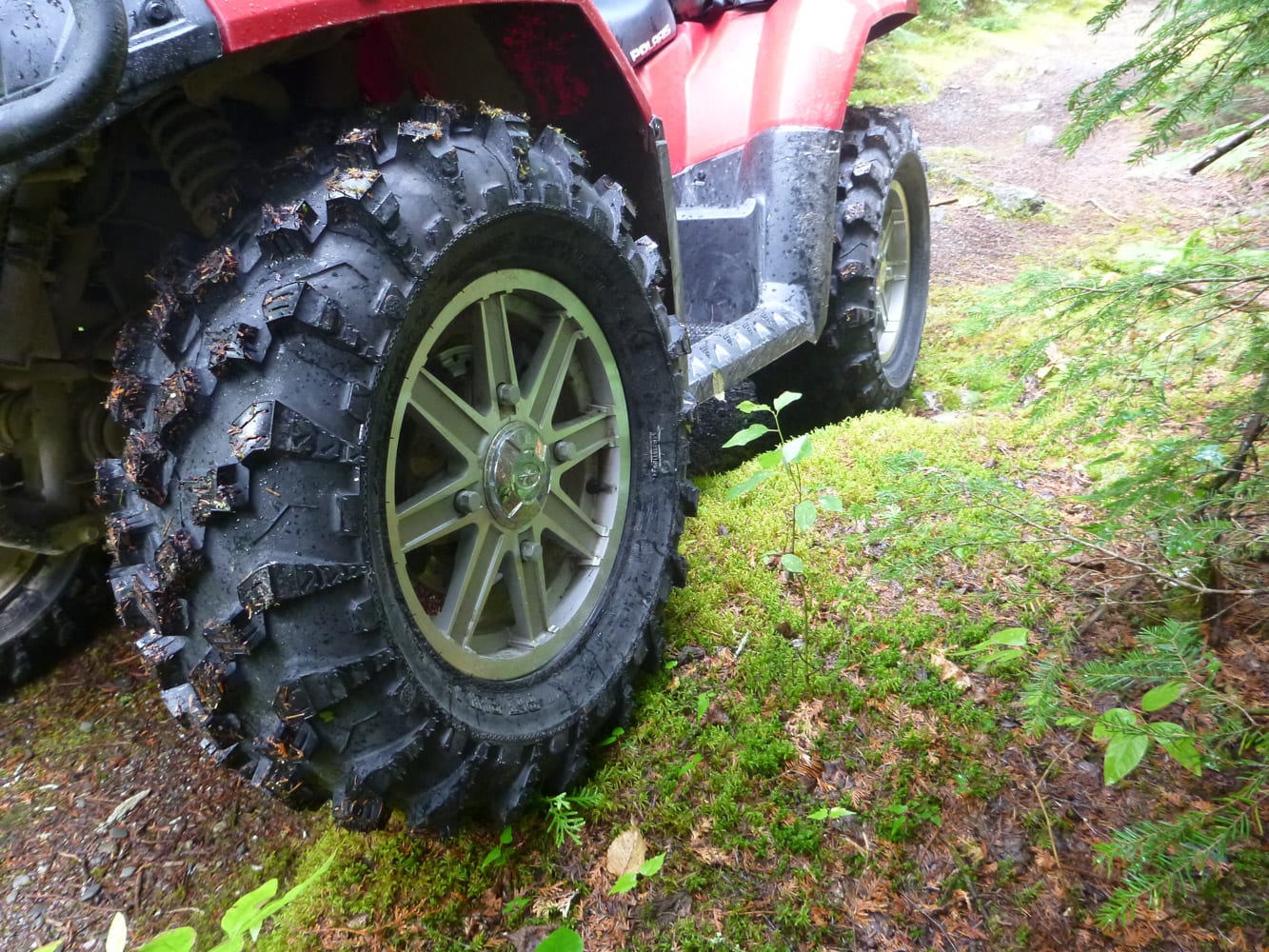When it comes to choosing new tires for your ATV, you will find that there is a huge variety available on the market and it could be difficult to make an informed choice from this vast assortment. Replacing your tires is quite a big investment, and making the right choice shouldn’t be taken lightly. There are several factors to consider and not just the tread pattern of the tire. Equally important is its structural composition and other specifications. Here are a few things to consider when choosing new tires for your machine.
First, determine your needs. You have probably traveled several kilometers with your ATV already, so you can gather information from your experience. Your riding style, the type of terrain you ride the most, the type of work performed with your machine, and the purpose for which your ATV is designed should all be taken into consideration.
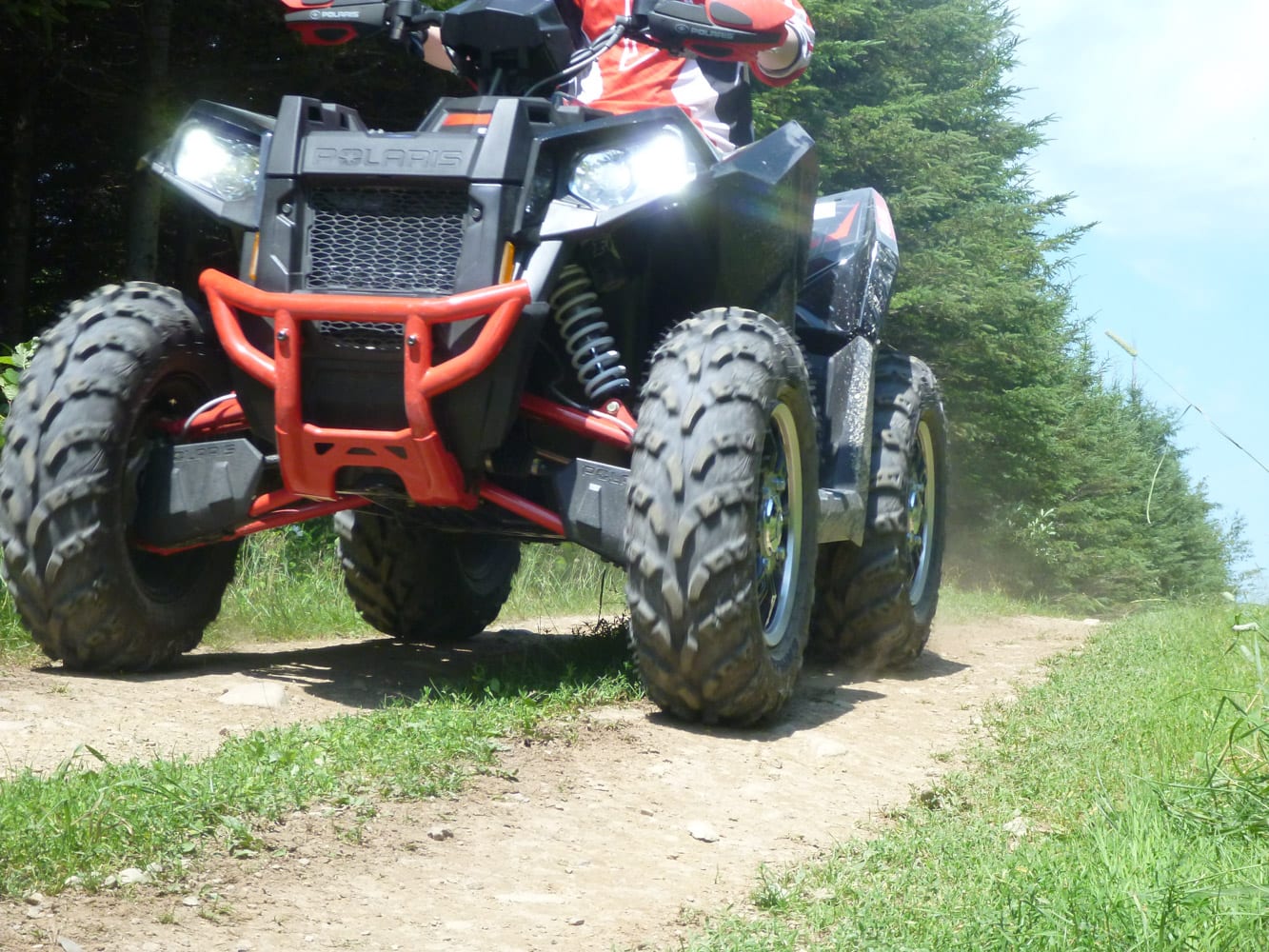
Your driving style
A rider who tends to ride at high speed will need a tire with a more rigid carcass, a less aggressive tread pattern, and ideally a lower profile tire. These characteristics will help to maintain good stability at high speed. If, on the other hand, using your ATV is all about circling around the cottage and hauling a few logs in a small trailer, a smooth tire tread will protect the terrain from the frequent passage of the machine. A tire with a less rigid structure will be sufficient for the task and the price of this type of tire will certainly be lower.
Your ATV playgrounds
The type of terrain on which you use your ATV the most is very decisive in your choice of tires:
Sandy terrain – If you primarily use your ATV in the sand, a very aggressive tire or a paddle tire will propel the machine efficiently. This type of tire usually has a flexible structure and is very efficient in the sand. On the other hand, it offers little resistance to punctures.
Deep mud – In recent years, deep mud ATV riding has become more and more popular. Many manufacturers took this opportunity to demonstrate their know-how and created mud monsters specifically adapted to these conditions. The tire choice should be carefully directed towards something extremely aggressive and stiff. These tires will have excellent traction in mud, but it will be the opposite on hardpack terrain. As for the structure, it is very stiff and puncture resistant. However, it provides a very rough ride and doesn’t absorb trail defects very well; your back will quickly let you know.
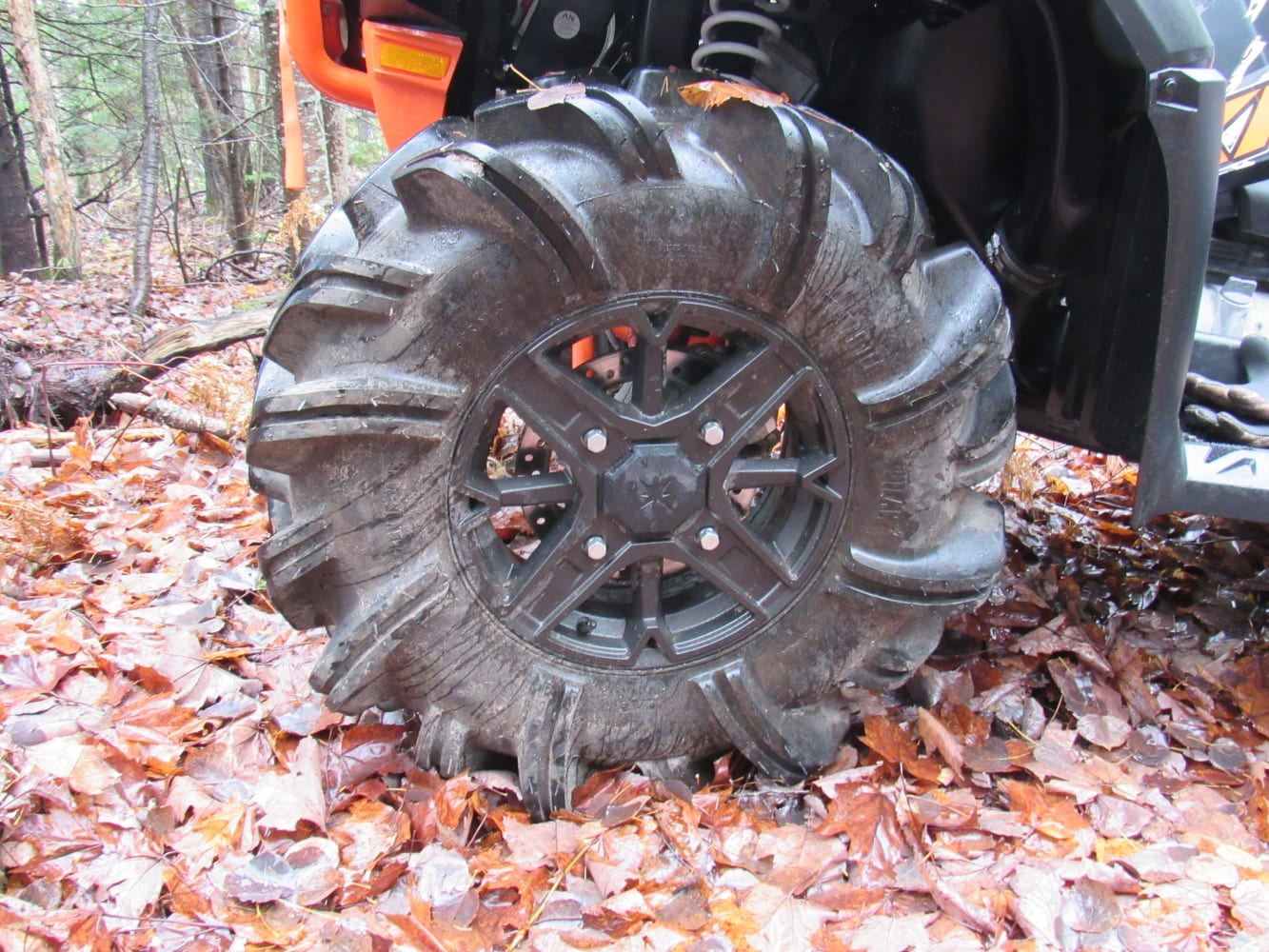
All-purpose / All-terrain tire – Most ATV riders will opt for this type of tire. It is aggressive enough not to get bogged down easily, but not too aggressive in order to provide a smooth ride. It will also be of great importance that it be puncture resistant, especially in rocky terrain. Finally, a flexible structure that is comfortable to ride should not be neglected. We all know the very popular Maxxis Bighorn. It is a good example of a decent performance tire in most situations, as it is aggressive enough to get you out of a muddy hole without ruining the ride comfort of your machine.
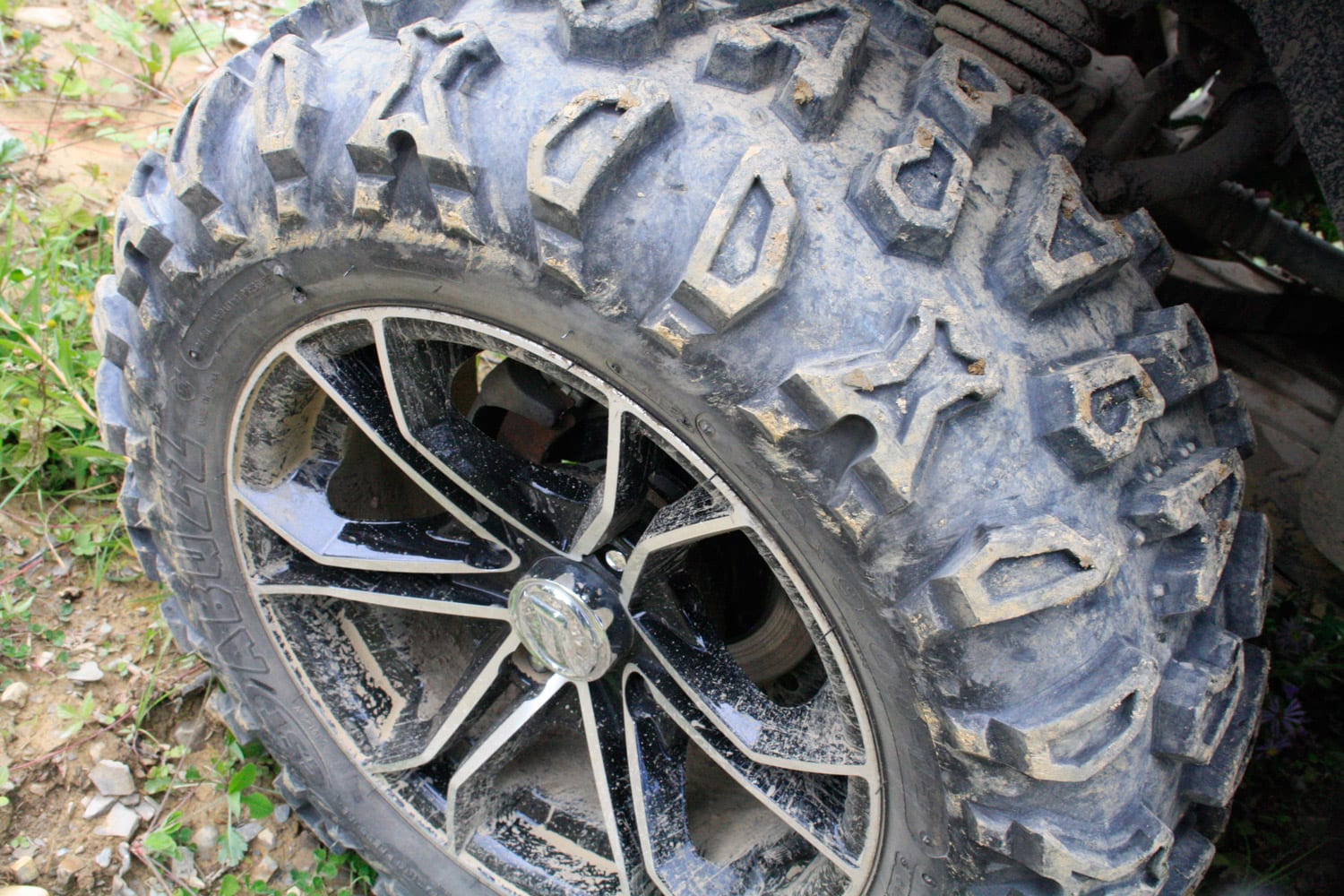
The internal composition of a tire
Beyond the tire tread pattern, there is a design and construction layout. For this reason, it is necessary to understand what is written on the side of the tire. That will tell you the number of plies that compose it, the type of carcass (radial or bias), and its dimensions.
The plies
Under the tread hides the structure of the tire which is made of a braiding of cotton or polyester cord. Each row of braiding constitutes a ply. The number of plies is a puncture resistance grade and also a tire load grade. This information can be found on the sides of the tire. The number of plies is usually between two and eight. However, the more plies the tire has, the heavier and the more rigid it will be. So the ride comfort is directly influenced by the number of plies. This is true for the “bias” type of carcass.
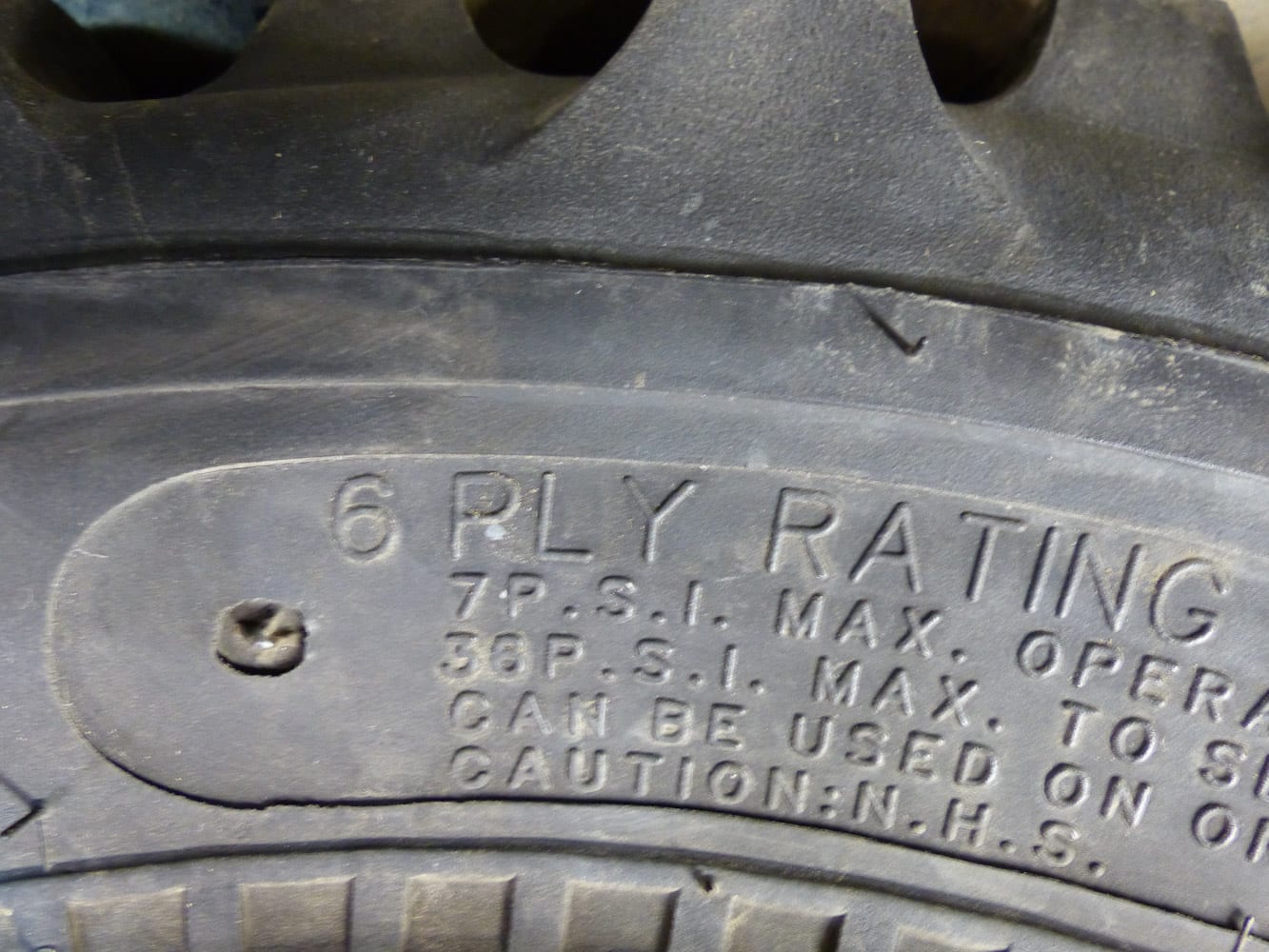
The bias-ply tire
The bias type is a design that has been there for decades. The tire bears the name “ bias ” from the cord layers in the internal structure that are oriented at an angle from one bead of the tire through the other bead. The tire has the same number of plies throughout its construction.
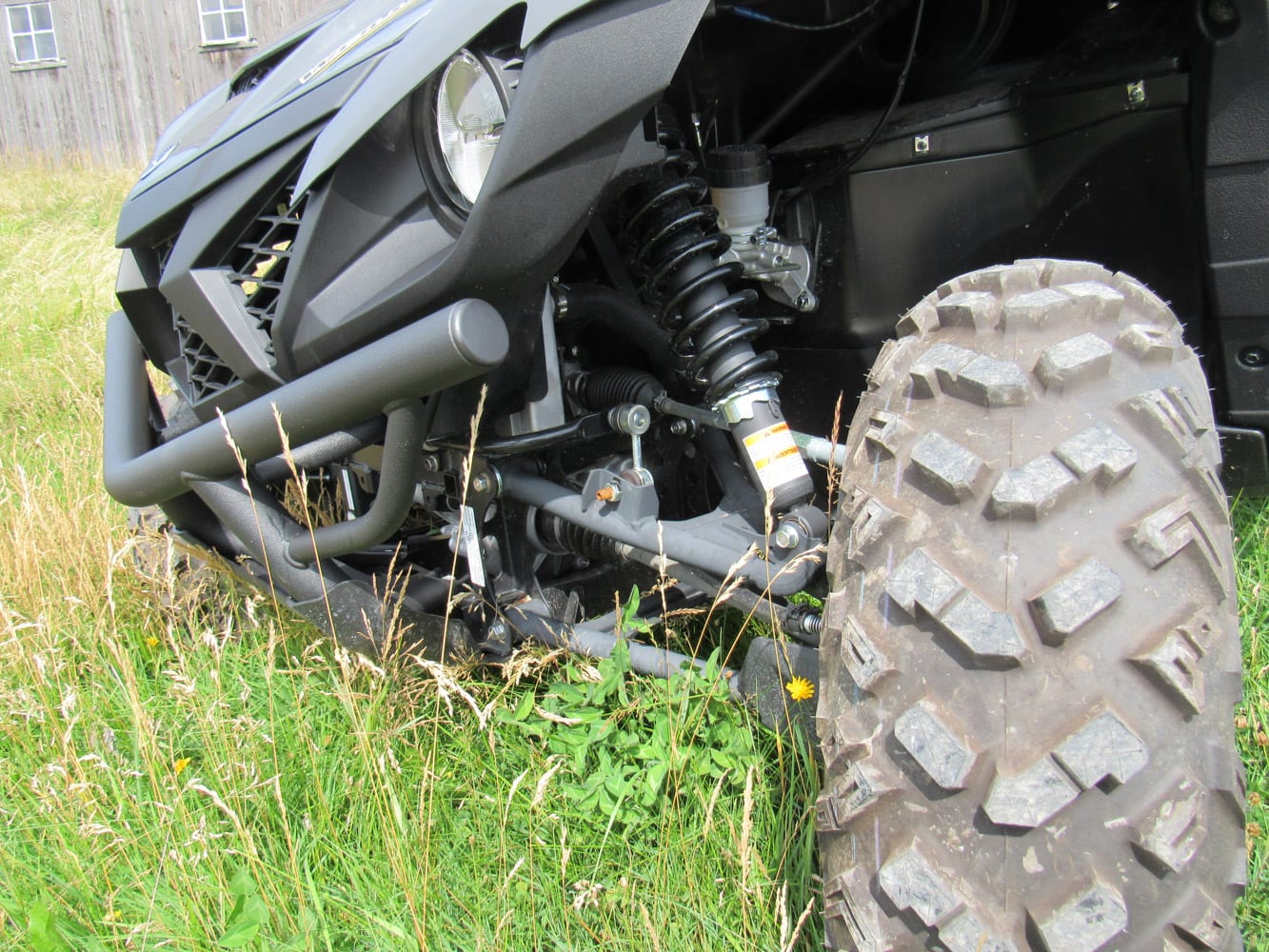
The radial tire
We recognize the radial construction tire by the “ R ” that is added to the dimension of the tire inscribed on the sides. In the following example 28X10R14 the R means radial construction. The internal construction of this tire has two layers. The first layer, similar to the bias tire, is oriented perpendicular to the direction of the tire rotation. This layer will make the sidewall of the tire and the first layer of the tread. The perpendicular orientation will provide greater flexion on the sides of the tire for increased ride comfort. The biggest construction difference between the radial tire compared to the bias tire is mainly at the second phase of tire manufacturing. The carcass design of the tread is composed of layers laid radially that are reinforced either of steel, polyester, or carbon fibers. This design allows a tire to be built with a flat profile, provides a tread that is puncture resistant, offers reduced rolling resistance, a better footprint, and also greater wear durability. All of these while maintaining a comfortable ride.
Tire size
The tire dimensions are always stamped on the sidewalls of the tire. It is important to keep the same dimension ratio between those fitted on the front and the rear of your ATV, especially if your machine is a four-wheel drive. Otherwise, the constant tension in the powertrain could cause considerable mechanical failures.
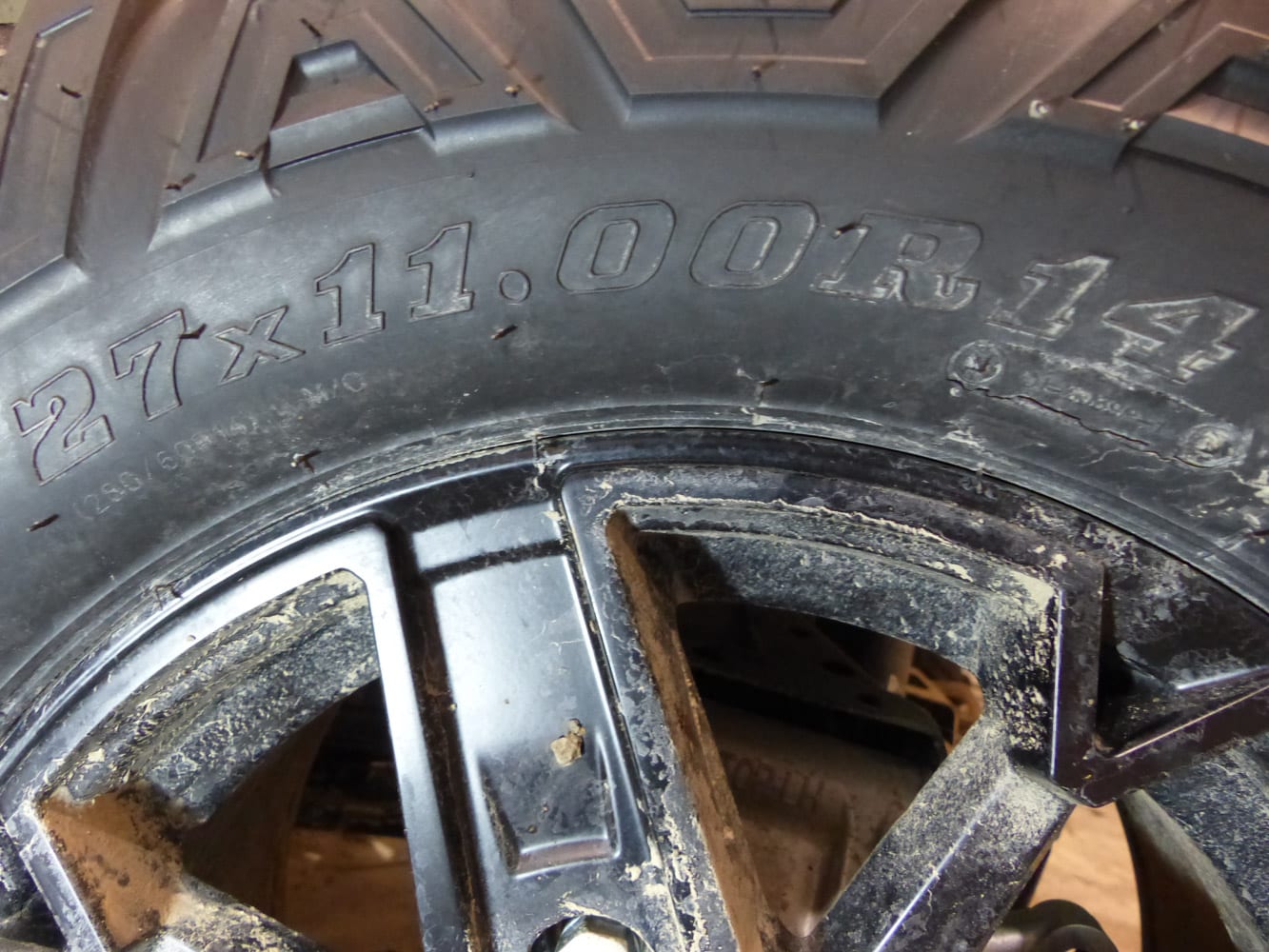
Understanding the size of a tire
In our example 28X10R14, the first number denotes the tire diameter in the imperial unit of measurement, 28 inches in this case. The second number determines the tread width, 10 inches for that tire. The letter R indicates that the tire is of radial design; the same bias-designed tire would have the inscription 28X10-14. Finally, the last number 14 specifies the diameter of the rim in inches.
Winter use
For those who use their ATV in the winter season, it is important to consider a tire that is adapted to the cold temperatures. Winter tires are made from a rubber that remains softer and more flexible in the cold, which improves traction. The CST Stag is one good winter tire that we tested. It is also possible to purchase studded tires which greatly improve traction on ice.
The important thing is to always find the right balance between performance and reliability. In the vast majority of cases, the radial tire will be your best choice. As for the number of plies, you will have to make a compromise between comfort and durability. Now all you need to do is determine your needs.


